Abstract
The interactive effects of phosphorus supply and combined nitrogen (nitrate) on dry matter and nitrogen accumulation by nodulated soybean (Glycine max L. Merr.) plants, and the relative effects of phosphorus supply on nodule number, mass, and function in comparison to host plant growth were used to investigate the role of phosphorus in symbiotic dinitrogen fixation. Mixed positive and negative phosphorus by nitrogen source interactions indicated that severe phosphorus deficiency markedly impaired both host plant growth and symbiotic dinitrogen fixation and that symbiotic dinitrogen fixation has a higher phosphorus requirement for optimal functioning than either host plant growth or nitrate assimilation. In the whole plant phosphorus concentration range of 0.8 to 1.5 grams per kilogram dry weight, plants supplied with 20 millimolar nitrate accumulated significantly more dry matter and nitrogen than symbiotic plants without nitrate. This suggested that the higher phosphorus requirement for symbiotic dinitrogen fixation is internal rather than being associated with differences in the ability of roots in the two nitrogen regimes to absorb phosphorus from the external solution. Increasing the phosphorus concentration in plants solely dependent on dinitrogen fixation resulted in highly significant (P = 0.0001) increases in whole plant nitrogen concentration as well as highly significant increases (P = 0.0001) in whole plant dry matter and nitrogen accumulation. This indicated a greater responsiveness of symbiotic dinitrogen fixation than of host plant growth to improvement in phosphorus nutrition. The large increases in whole plant nitrogen concentration were associated with about 3.5-fold increases in the ratio of nodule mass to whole plant mass and about 2-fold increases in specific acetylene reduction (nitrogenase) activity of the nodules. The large increase in nodule mass (>30-fold) between the 0 and 2.0 millimolar phosphorus levels resulted from 11- and 3-fold increases in nodule number per plant and average mass of individual nodules, respectively. Root mass per plant over the same concentration range increased 3.5-fold. These results indicate that phosphorus has specific roles in nodule initiation, growth, and functioning in addition to its involvement in host plant growth processes.
Full text
PDF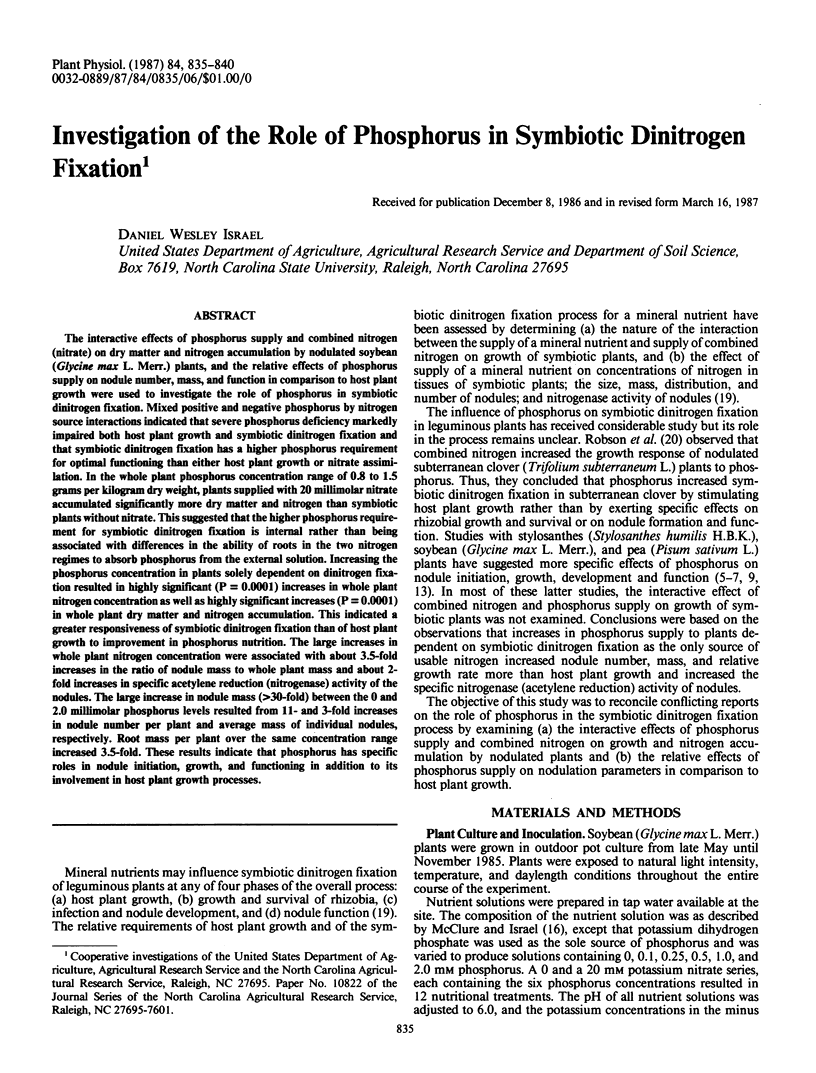

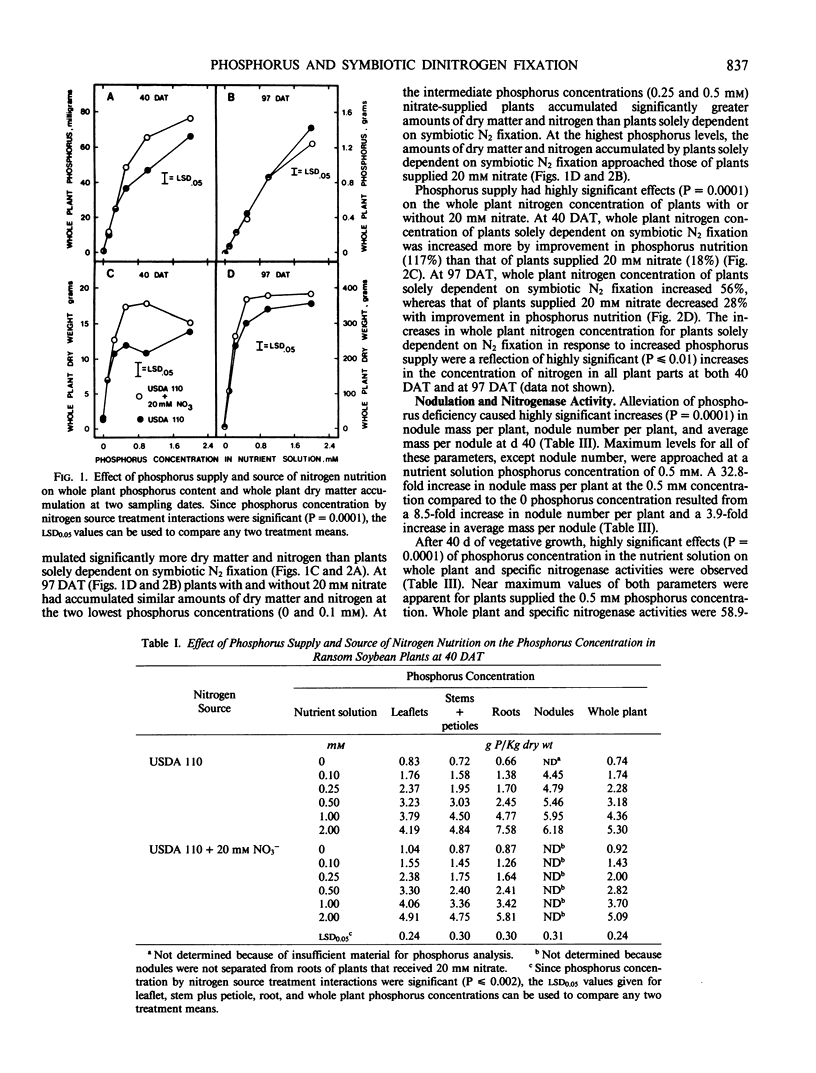
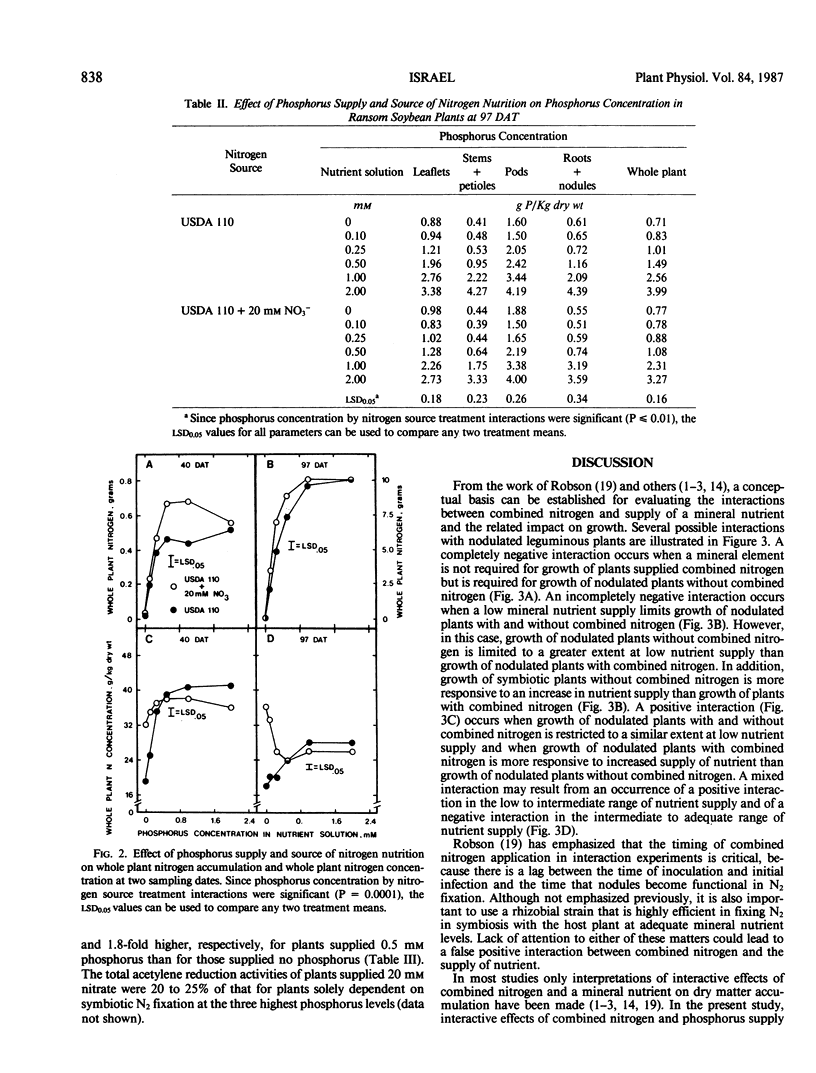
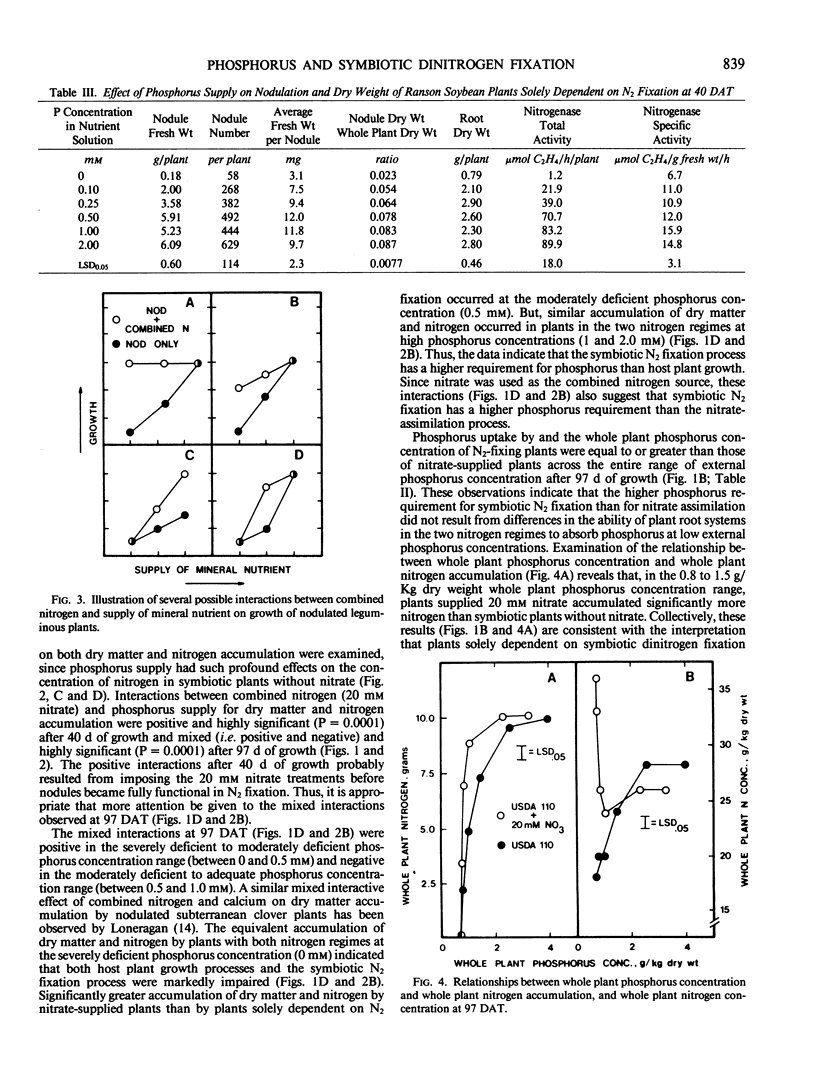
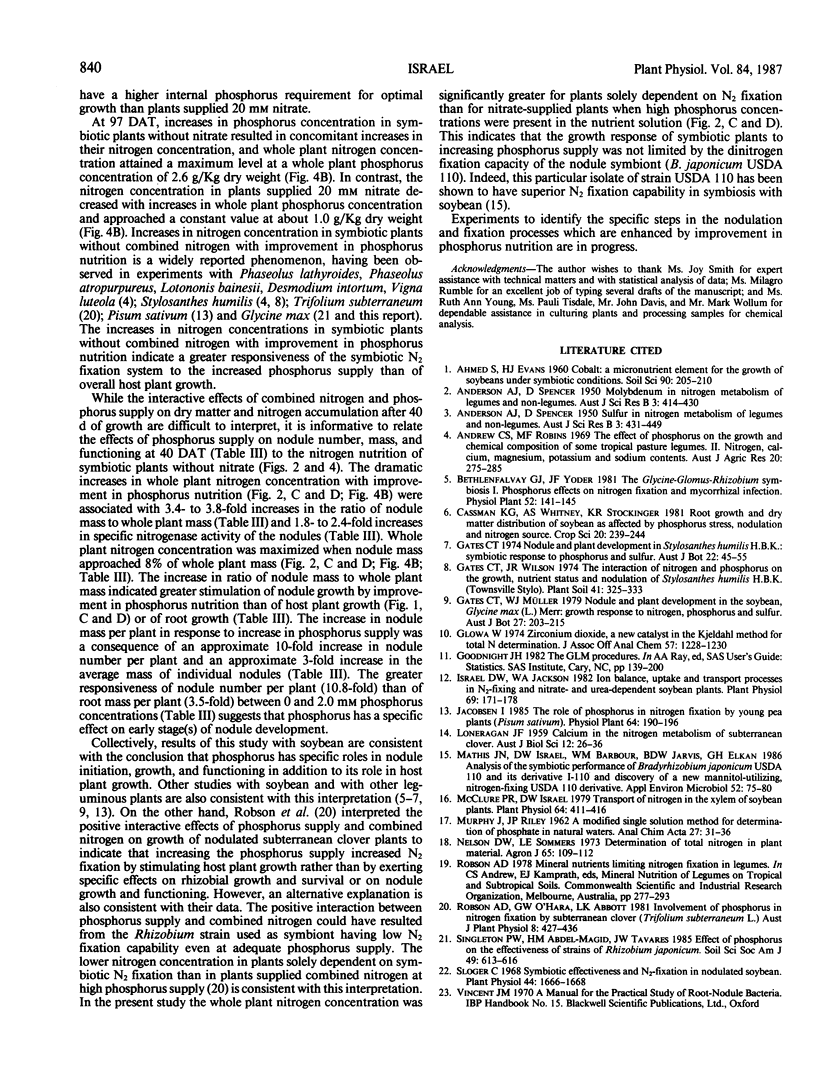
Selected References
These references are in PubMed. This may not be the complete list of references from this article.
- Israel D. W., Jackson W. A. Ion balance, uptake, and transport processes in n(2)-fixing and nitrate- and urea-dependent soybean plants. Plant Physiol. 1982 Jan;69(1):171–178. doi: 10.1104/pp.69.1.171. [DOI] [PMC free article] [PubMed] [Google Scholar]
- Mathis J. N., Israel D. W., Barbour W. M., Jarvis B. D., Elkan G. H. Analysis of the Symbiotic Performance of Bradyrhizobium japonicum USDA 110 and Its Derivative I-110 and Discovery of a New Mannitol-Utilizing, Nitrogen-Fixing USDA 110 Derivative. Appl Environ Microbiol. 1986 Jul;52(1):75–80. doi: 10.1128/aem.52.1.75-80.1986. [DOI] [PMC free article] [PubMed] [Google Scholar]
- McClure P. R., Israel D. W. Transport of nitrogen in the xylem of soybean plants. Plant Physiol. 1979 Sep;64(3):411–416. doi: 10.1104/pp.64.3.411. [DOI] [PMC free article] [PubMed] [Google Scholar]
- Sloger C. Symbiotic effectiveness and n(2) fixation in nodulated soybean. Plant Physiol. 1969 Dec;44(12):1666–1668. doi: 10.1104/pp.44.12.1666. [DOI] [PMC free article] [PubMed] [Google Scholar]


